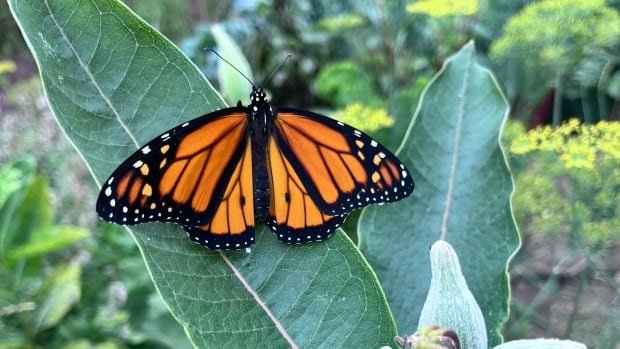
During the summertime, it’s routine for Everton resident Susan Johnson to go to her backyard and check on her milkweed plants in the garden.
Milkweed plants are the only host plant for monarch caterpillars. It provides the nourishment the monarch needs to transform into an adult butterfly. Without it, the monarch cannot complete its life cycle and their populations decline.
With 2024 being a particularly bad year for monarch butterflies due to higher-than-usual temperatures, drought conditions, and El Niño weather patterns, Johnson is using her backyard to participate in monarch butterfly rescue and conservation.
“They’re extraordinary creatures,” said Johnson.
Twice a day, from May until late September, Johnson looks under leaves to collect monarch eggs and caterpillars.
When Johnson comes across a caterpillar, she carefully transfers it to a secure mesh container on her back porch. There, she feeds it, closely monitoring its progress until it inevitably transforms into a butterfly, which she then releases it.
If she finds an egg, she follows a similar process. However, before placing it in the container, Johnson sterilizes both the egg and the leaf it rests on with a diluted bleach solution to prevent the spread of ophryocystis elektroscirrha (OE), a vicious parasite that infects monarch butterflies.
“If I do get an egg, I will keep them separate from caterpillars that I find, so that the caterpillar, if he is infected with OE, can’t infect the egg,” said Johnson.
Right now there are nine butterflies under Johnson’s care, and she’s released one. It’s a stark difference compared to the 74 butterflies she released in 2020, her top year, but it’s not stopping her from continuing her rescue efforts.
“The numbers are plummeting, but it’s so important to do this,” said Johnson.
Uplisted to an endangered species
In December 2023, the iconic orange-and-black insects were officially uplisted from special concern to endangered under the federal government’s Species at Risk act because of its fast dwindling numbers.
The reasons for the declining trend in the monarch butterfly population is spread across three different countries — Mexico, the United States and Canada, said Stephen Murphy, professor of the school of environment, resources, and sustainability at University of Waterloo.
Murphy says monarch butterflies are very vulnerable to small changes in weather, so extreme weather patterns in Texas, including an ice storm and heat wave, plus El Niño weather patterns in Mexico which caused more cold and rain in the region, has contributed to this year’s dwindling numbers.
“Historically speaking, every time you get a bit of a pattern shift that gets too cold at a certain crucial time of their development, or it gets too warm or too rainy or anything like that, they suffer,” said Murphy.
Despite the small-scale effort, Murphy said Johnson’s conservation efforts prevent the issue from getting worse and every little bit helps.
“We have sort of an ability to actually connect to nature. And it does make a difference in terms of actually ensuring that we don’t make the problem far worse,” said Murphy.
According to Ontario Nature, there are several ways people can help monarchs. One of the best things is to provide them with food by planting milkweed so they can lay their eggs, and native wildflowers because adult butterflies rely on them for nectar.






